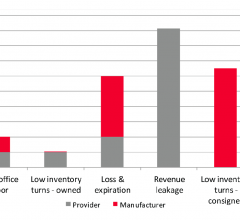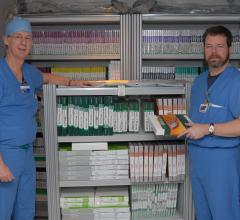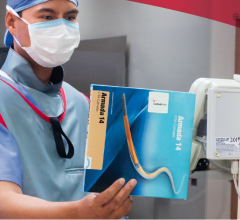June 25, 2008 - The electromagnetic interference (EMI) produced by radio frequency identification (RFID) tracking systems can interfere with critical care medical devices, according to a new study by the Academic Medical Centre, University of Amsterdam, in the Netherlands.
The findings were published this week in the Journal of the American Medical Association (JAMA). In a controlled nonclinical setting, RFID induced potentially hazardous incidents in medical devices, including ventilators, pacemakers and infusion pumps, raising the question as to the safe compatibility of these systems in the critical care environment.
Without a patient being connected, clinicians who conducted the study measured the level of EMI on medical devices using two different RFID systems (active 125 kHz and passive 868 MHz). The tests measured the interference with 41 medical devices (in 17 categories, 22 different manufacturers). The interference was measured and classified as hazardous, significant, or light.
In 123 EMI tests RFID induced 34 EMI incidents. Of these, 22 were classified as hazardous, two as significant, and 10 as light. The passive 868-MHz RFID signal induced a higher number of incidents with 26 incidents in 41 EMI tests, which was a 63 percent incident rate as compared to a rate of about 20 percent with active 125-kHz RFID. The passive RFID signal induced EMI in 26 medical devices, including eight that were also affected by the active RFID signal. The median distance between the RFID reader and the medical device in all EMI incidents was 30 cm.
Active RFID systems use a radio frequency emitting tag that is attached to equipment or patients so they can be tracked and easily located on a map screen called up on a computer. Passive RFID tag includes inventory tags that can be read automatically by an RFID detector, similar to retail tags that set off alarms at the exit doors at stores.
For more information: http://jama.ama-assn.org


 April 28, 2017
April 28, 2017 









